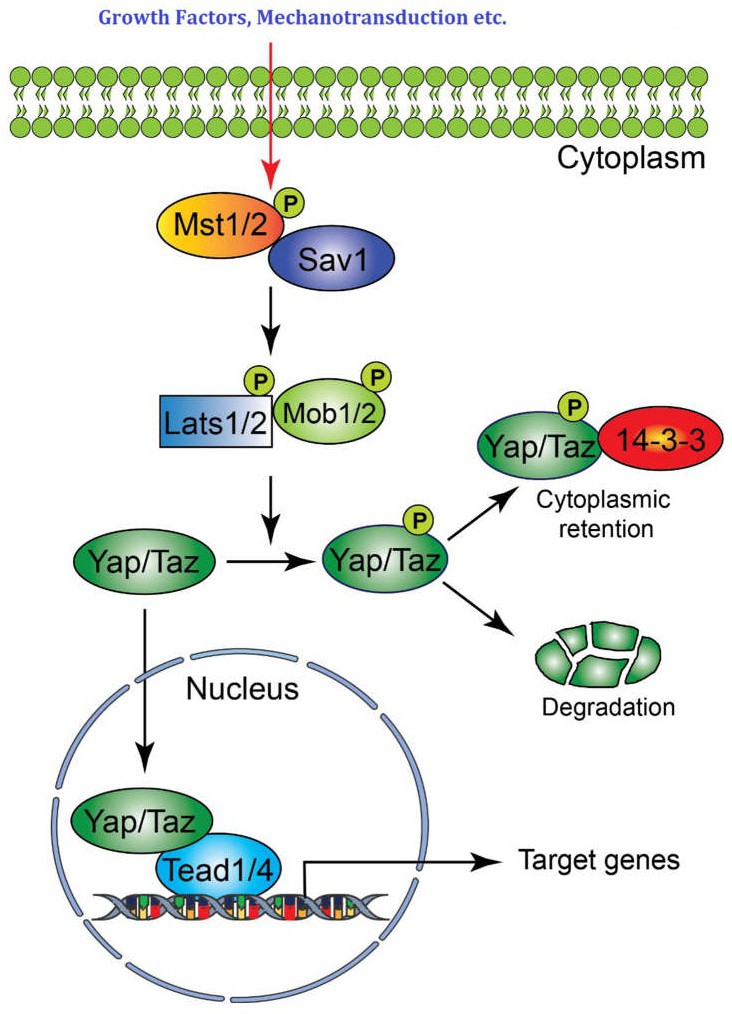Fig. 7. The Hippo pathway effectors which involved in regulating the localization of YAP/TAZ. When the Hippo pathway is not active, YAP/TAZ can interact with TEAD1-4 transcription factors and promote the transcription of genes involved in cell proliferation. When the Hippo pathway is active, YAP/TAZ is inhibited due to their phosphorylation by core components of the Hippo pathway such as SAV1, MST1/2, and LATS1/2 (shown in the central rectangle). In a phosphorylated form, cytoplasmic YAP/TAZ may interact with (a) the 14-3-3 protein, (b) components of cell junctional complexes like AMOT or b-catenin, or (c) may be degraded in proteasomes [84].
